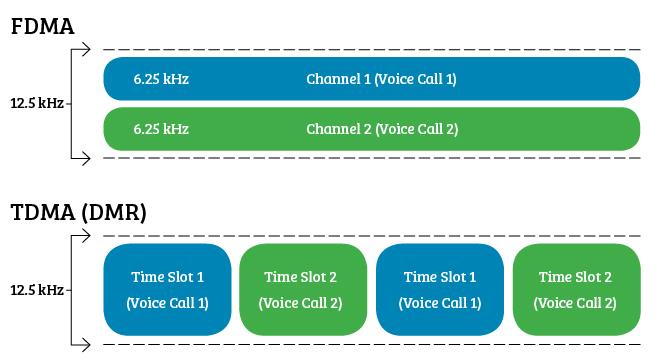How to buy FDMA radio systems
FDMA digital radio technologies such as dPMR and NXDN may not be as well known as DMR, but they have plenty to offer, as Sam Fenwick discovers
Before we get into the meat of this piece, a bit of technical explanation is needed. Frequency Divided Multiple Access (FDMA) allows the use of two channels within a 12.5kHz chunk of spectrum. As its name suggests – the two channels are separated by frequency. In contrast, DMR uses Time Divided Multiple Access (TDMA) technology to divide the 12.5kHz channel into two time-slots, giving the same effective capacity (see the diagram below).
There are two main technologies on the market that use FDMA: dPMR and NXDN. dPMR is an open standard developed by ETSI as a low-cost, low-complexity technology. NXDN is an ITU standard and has been implemented by Kenwood as NEXEDGE and by Icom as IDAS. It can operate in 6.25kHz or 12.5kHz channels, while dPMR uses only 6.25kHz.

Time and the unceasing efforts of two-way manufacturers’ R&D departments have eroded a lot of the differences between FDMA technologies and TDMA (DMR) from an end-user’s perspective. “Both dPMR and DMR air interface protocols have developed significantly since introduction. DMR now has options to provide simple and inexpensive systems, while dPMR can offer multi-site and wide area systems-based solutions including Mode 3 trunking,” says Mike Atkins, director at Kenwood and chair of the dPMR Association’s marketing group.
Register now to continue reading
Thank you for visiting Land Mobile, register now for free and unlimited access to our industry-leading content.
What's included:
-
Unlimited access to all Land Mobile content
-
New content and e-bulletins delivered straight to your inbox



